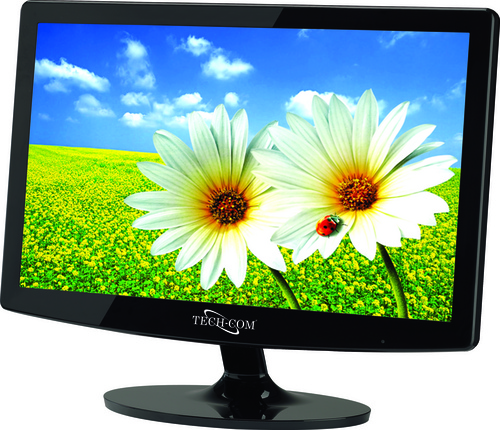IMAGE IN SVG,CLICK HERE
viernes, 18 de diciembre de 2015
lunes, 14 de diciembre de 2015
viernes, 27 de noviembre de 2015
martes, 24 de noviembre de 2015
martes, 17 de noviembre de 2015
martes, 10 de noviembre de 2015
miércoles, 28 de octubre de 2015
DEFRAGMENTION
Defragmentation is the process of locating the noncontiguous fragments of data into which a computer file may be divided as it is stored on a hard disk, and rearranging the fragments and restoring them into fewer fragments or into the whole file. Defragmentation reduces data access time and allows storage to be used more efficiently.

Why does Windows need defragmentation?
Windows operative system is not capable of autodefraging, which means it doesn't put together the separated blocks and gaps in the hard drive automatically. That is the reason why we need to do it ourselves
Defragmentation is the process of locating the noncontiguous fragments of data into which a computer file may be divided as it is stored on a hard disk, and rearranging the fragments and restoring them into fewer fragments or into the whole file. Defragmentation reduces data access time and allows storage to be used more efficiently.

Why does Windows need defragmentation?
Windows operative system is not capable of autodefraging, which means it doesn't put together the separated blocks and gaps in the hard drive automatically. That is the reason why we need to do it ourselves
martes, 20 de octubre de 2015
PRINTERS & SCREENS:
Types of printer:
A printer is an external hardware device responsible of taking information from the computer and generating a hard copy of that information.
There are four main types of printers used in everyday life:





Types of printer:
A printer is an external hardware device responsible of taking information from the computer and generating a hard copy of that information.
There are four main types of printers used in everyday life:
- Multi Function Printers (MFP):
- It is used to describe a hardware device such as an all-in-one printer that is a printer, fax, and scanner all in one device.
- It take up less room.
- They are usually lower in cost. Though it may seem expensive compared to the other types of printers, if you consider buying a fax machine, scanner, photocopier and a printer it would be more affordable.
- Inkjet printer
- An inkjet printer is a computer peripherial that produces hard copy by spraying ink onto paper.
- Produces color prints and black and white documents at a lower initial cost than laser printers.
- Inkjet printers produce images by spraying a jet of ink unto a substrate in a dot matrix. The quality of the resultant image depends on many factors:

- Laser printer:
- A laser printer is a popular type of personal computer printer that uses a non-impact (keys don't strike the paper), photocopier technology.
- Laser printers have three levels of quality settings: draft, normal, best (the higher the quality, the lower the print speed.)
- The printer's job is to convert this electronic data back into words and pictures: to turn electricity into ink. Ink guns, operated electrically, fire precise streams of ink at the page.

- Dot-matrix printer:
- A type of printer that produces characters and illustrations by striking pins against an ink ribbon to print closely spaced dots in the appropriate shape.
- Speed: the speed can vary from about 50 to over 500 cps. Most dot-matrix printers offer different speeds depending on the quality of print desired.
- print quality: determined by the number of pins. It can vary from 9 to 24.

Types of screens (monitor):
The term "monitor" is often used synonymously with "computer screen" or "display." The monitor displays the computer's user interface and open programs, allowing the user to interact with the computer, typically using thekeyboard and mouse.
There are three main types of screens:
- CRT (Cathode Ray Tube) Monitors
- CRT is the technology used in traditional computer monitors and televisions.
- The image on a CRT display is created by firing electrons from the back of the tube to phosphors located towards the front of the display. Once the electrons hit the phosphors, they light up and are projected on the screen. The color you see on the screen is produced by a blend of red, blue, and green light.
- LCD (Liquid Crystal Display) Monitors
- It is the technology used for displays in notebook and other smaller computers.
- Like light-emitting diode (LED) and gas-plasma technologies, LCDs allow displays to be much thinner than cathode ray tube (CRT) technology.
- LCDs consume much less power than LED and gas-display displays because they work on the principle of blocking light rather than emitting it.

- LED (Light-Emitting Diodes) Monitors
- An LED is a semiconductor device that emits visible light when an electric current passes through it.
- An LED monitor or LED display is a flat screen, flat panel computer monitor or television.
- It has a very short depth and is light in terms of weight.
- The difference between this and a typical LCD monitor is the backlighting. The first LCD monitors used CCFLinstead of LEDs to illuminate the screen.
LED MONITOR ADVANTAGES
- Typically are less expensive
- Broader dimming range
- Overall more reliable
- They run at a lower temperature, and consume much less power, as few as 20 watts
- Longer lifespan and less environmental impact

Suscribirse a:
Comentarios (Atom)












